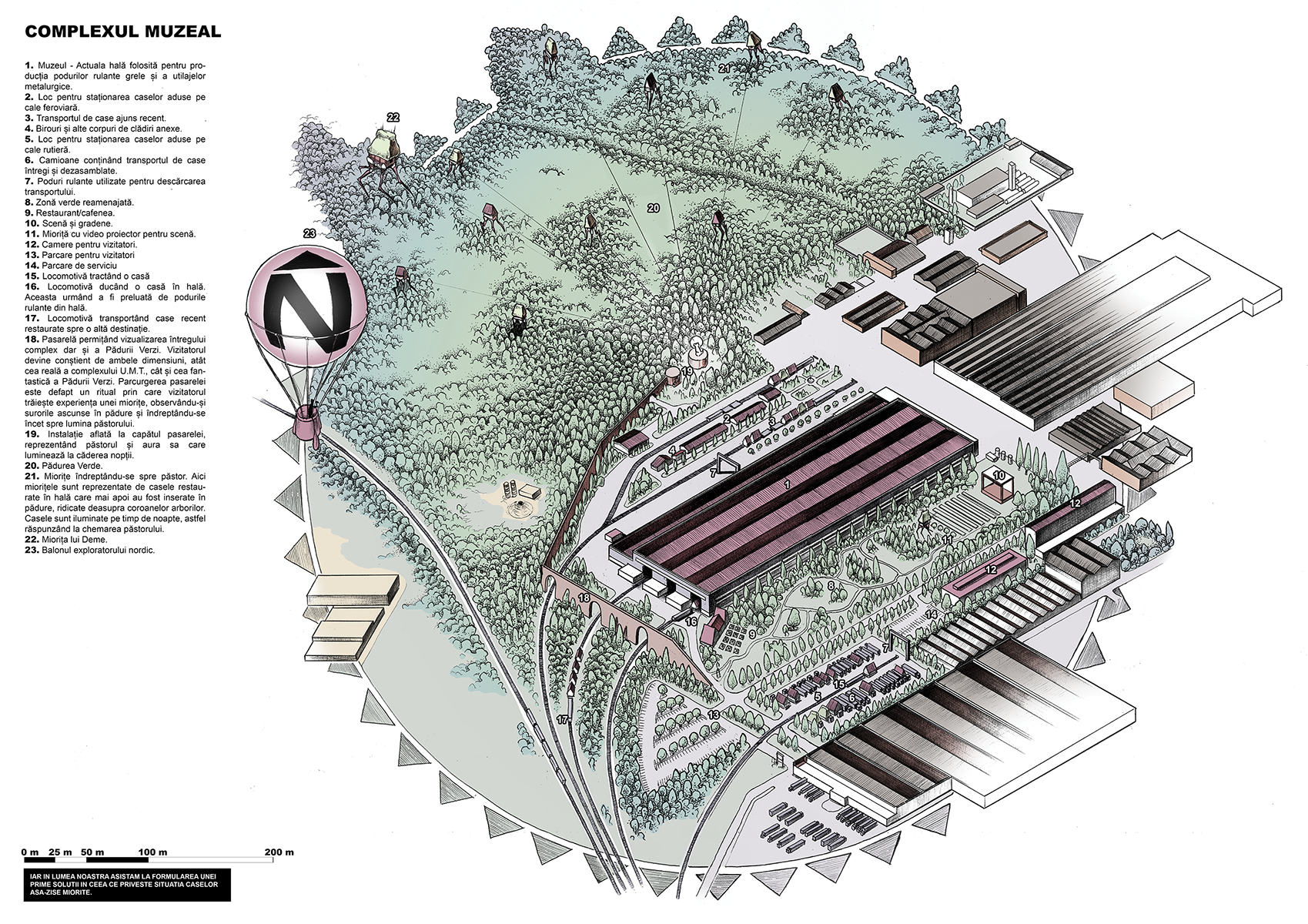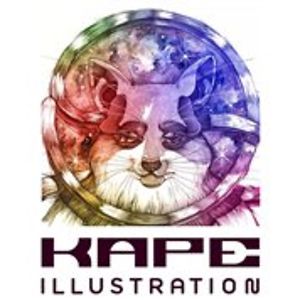The project is about a new type of museum for Romanian ethnographic architecture (in this case traditional houses made out of wood). It is a continuation of a future comic book, now only found in a story-board stage.
http://issuu.com/kapeillustration/docs/marsul_mioritelor/1
The museum presented here is an industrial building which can provide temporary shelter for abandoned house. Here people can both visit and restore the houses and afterwards reinsert them in a new environment.
Although the project was supposed to be architectural oriented, it turned out as a story which presented a collision between two worlds.
There is the real world where we find our country (Romania), which has many abandoned or partial abandoned villages and a main character (a stray dog) that searches for a solution to this problem. The dog is travelling by train, from one village to another, carrying a few abandoned houses to a more suited environment where they could be restored and put to better use.
Meanwhile, in the fantasy world, we have a herd of „Miorițe” (ewe), which here are in fact the same traditional houses from the real world but with legs. They are leaving the human lands, crossing the forest and heading for the peek of the mountains where they hope to find peace and solitude. Tracking their tails, we have the main character, the Shepherd, which here is the same stray dog from the real world but with magical powers. He hopes to recover the „Miorițe” and convince them to return to the Romanian folk.
As we go through the story, we find at the end, a possible solution for the problems mentioned in both worlds, a new type of museum. It’s an industrial building of big proportions and well equipment for restoring houses (cranes, railways, etc.)
More info: Facebook
The museum’s surroundings are rearranged. It has a system of railways that connects the museum to different parts of the complex, making it easy to transport houses from one place to another. There is a park with a café, a stage and a Mioirița with a video projector for the stage. Crossing the railways we have a bridge that offers the museum’s visitors a great view of both the real world (which here is the industrial park) and the fantasy world (represented here by the Green Forest located to the north). But the bridge becomes more than that. It is in fact a ritual in which the visitor experiences the life of a Miorița, standing above the world and heading towards the Shepherd. At the end of the bridge we can see a statue of a dog with an aura around his body, the Shepherd. The statue’s aura glows very bright at night. In the forest we can see a few traditional houses with legs, standing above the trees. These were restored in the museum and then installed in the forest. They represent a heard of Miorițe heading towards the Shepherd’s light, responding to it’s call.
As we study the industrial building’s axonometric image we see that the houses brought here are moved from one spot to another with the help of some cranes. The moment the houses arrive in the hall they go through a process of restoration starting from quarantine, then treatment (against fungus or other bacteria in the material), restoration and exhibition. After this they are reinserted in a natural environment.
The hall’s plan shows the 4 main sectors. A. Quarantine, B. Treatment, C. Restoration, D. Exhibition.
Sections of the building.
Images from both the fantasy and real world.
Transportation ways for the abandoned houses.
Mioritization is a slow but steady process that goes beyond physical restoration of abandoned houses and binds the two worlds, allowing a house to evolve back into a Miorița. But should the link between Romanian folk and their tradition weaken again, a Miorița will start decomposing returning to a state of an abandoned house, and if it’s ignored it will eventually collapse and disappear.
The Shepherd on his quest for knowledge about the Miorițe. This is the interior world of the very first of the Miorițe, Eve. In the center of the image you can see the Miorița’s true face. Rozetari are the spirits located in the wood used to build the Miorițe. They are the main component that keep the Miorițe alive. They feed of traditions and the spirit of the older rural life style.
Mioriță model. 1:50
Mioriță model. 1:50
Mioriță model. 1:50
Mioriță model. 1:50
Mioriță model. 1:50
Thank you all for viewing and reading. Hope you enjoyed this trip with us. If so, don’t hesitate to up vote this post.
Cheers and good will!













6
0